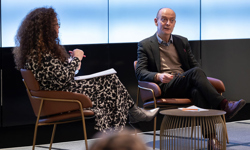Growing revenue from digital media can seem like an impossible task. Consumers still expect content to be free, competition and unlimited inventory is driving down ad rates, and the investment required in technology grows exponentially, while global tech giants stand ready to eat publishers’ lunch, breakfast and supper.
So The Media Briefing’s Monetising Media conference in London had a challenging task. How to share stories of success, inspire despondent media businesses and show a way forward in an increasingly complex environment?
By putting together stories of old media trying new tricks, reinvention of long established brands and smart tech-savvy start-ups rethinking business models, a new route ahead started to emerge for embattled publishers struggling to generate revenue from digital media. These are the seven themes that resonated with me:
1. Know your strengths / key assets
Noel Penzer, CEO of Time Out, summed up their strategy as monetising what Time Out stands for as a brand, not just their content. Their reputation for uncovering the best things to do and places to go in cities makes them a destination for young urban audiences, and they have exploited this with easy online ticketing, a range of curated events and even a food market in Lisbon. Time Out also has a reputation with advertisers for delivering audiences, and has moved into bespoke creative solutions, such as an ‘Alice Through the Looking Glass’ experience that consumers paid for which also promoted the movie.
Media brands have unique access to influential audiences and opinion-formers, which is highly valued by advertisers. Bloomberg developed a programme of content for UBS based on bespoke research and profiles of young entrepreneurs, and gathered together a round table of CFOs plus an in-house analyst to deliver insights for Oracle. Start-up Great British Chefs has built a relationship with 150 top chefs, who publish recipes, front video content created for their advertisers and run exclusive cook schools.
So, it pays to ask your audience how they view the brand, and consider how to exploit a reputation for trusted content, influencer access and audience reach to develop e-commerce, events and creative marketing solutions.
2. Be prepared to reinvent brands
As the consumer’s needs mutate, or new segments emerge, even long established brands can radically reinvent their content. IDG’s PC Advisor has rethought its content to match far more closely what people want as they progress through each stage of the research and buying process. They no longer publish news, but drive £250m of purchases, and the editor is focused on cost per conversion. In the UK, Dennis morphed its long established enthusiast title PC Pro into a much broader tech lifestyle site called alphr.com, attracting a wider audience and new advertisers. And The Week has made a surprising success of a children’s current affairs magazine, with its Junior edition achieving 23,000 paid subs.
3. Watch changing consumer behaviour – test new platforms
Consumer behaviour is changing far more rapidly than we think, especially among younger demographics. It’s important to keep evolving and testing new platforms.
Mobile is dominating the web – Forbes reports that 70% of their traffic is mobile, and Google predicts it will move to 90%. So content must be designed as mobile first. Mobile customers are even more sensitive to slow-loading ads, so formats must be streamlined.
Social platforms are intertwined with the mobile experience, and publishers are increasingly using the likes of Facebook Instant Articles to reach a wider audience, even if revenues are still elusive.
Messaging apps are growing faster than established social platforms, and are the communications medium of choice for younger audiences. Business Insider has been experimenting with news services built on Facebook Messenger, which deliver click through rates over 20%, despite low volumes. On Asian messaging platform LINE, however, they built 300k subscribers in three weeks. The big appeal of messaging apps for publishers is the potential for e-commerce or micropayments in future.
Video and visual content wins over text. VGTV is the video arm of Norwegian newspaper Verdens Gang, owned by Schibsted, and finds that most popular clips are under one minute long and can tell their story with audio off. Video is a natural partner for social; BBC World Service can see a tenfold audience increase on YouTube compared to onsite video. The Telegraph has launched a standalone video documentary channel, with series on multiple topics, but is still reliant on pre-roll advertising. However, AOL have successfully found single sponsors for long form video content.
Virtual reality is still relatively expensive to produce, although TU Media of Norway has developed a process that allows one person to shoot, edit and publish a short VR film in one day, and they are creating bespoke films for advertisers.
Live streaming of video is growing in popularity, and Facebook claims that live video generates ten times the volume of likes and comments. Games streaming network Twitch has two million broadcasters and has developed innovative live promotions for entertainment brands that reach a valuable audience and generate high engagement.
4. Diversify advertising
Digital display advertising is under pressure, with low rates, concerns about viewability and ad blocking – but is still a large proportion of publisher revenue. The debate continues about consistent definitions of views, and some publishers, Forbes and the FT included, are experimenting with Cost per Hour (CPH) rates to reflect the quality of engagement.
Social distribution, principally via Facebook Instant Articles and Apple News, is an important part of the mix for news media like Trinity Mirror and ESI Media. As well as widening the audience reach, it does appear to drive incremental ad revenue. So the consensus is that, despite their misgivings about the power of the global platforms, publishers on balance do better by engaging with them, and measuring results carefully. Digital native publisher BuzzFeed takes it a step further, creating bespoke content for Facebook and not expecting traffic to be redirected to their own website; instead relying on wider distribution for native advertising.
Creative solutions is a growing section of advertising revenue, with publishers enlisting their editorial teams or dedicated commercial departments to develop bespoke sponsored content, from Reuters’ partnership with Canon to create a series of dramatic images to Bloomberg’s videos for UBS, and TU Media creating virtual reality films for Google. The FT claims that half the briefs they receive include some branded content. But creative solutions are very expensive to service, and most pitches are competitive. Plus, publishers need to tread the fine line between independent editorial and promotional copy. Many have dedicated commercial content teams.
5. Develop premium subscriptions
Many publishers are exploring the opportunities to develop premium subscriptions, and convert casual readers to paying customers. News UK now have over 180,000 digital only subscribers to The Times, and have regularly increased rates, with editors explaining the changes to their readers. They have recently softened their approach to the paywall, introducing registered access to grow the number of highly engaged prospects and encourage them to establish a digital habit.
IDG has a video gaming site, which is free to view, but has a premium product priced at $6 per month which offers early access to new games and has over 50,000 subscribers.
Swiss newspaper NZZ has been introducing more automation into its subscription conversion process, and enhanced the treatment of cancellations, seeing a big improvement in retention. They have also introduced a dynamic and personalised paywall, where they monitor a new user’s behaviour for a week before making a tailored subscription offer based on the topics they appear to value.
B2B publishers have more scope to develop segmented data-driven subscription products and charge much higher prices, but even B2C publishers can identify what content, privileges, offers and events readers will value.
6. Measure, analyse and mine your data
Digital content generates vast amounts of data, which can provide significant insights into reader behaviour. The FT has 32 data analysts, and carefully calculates the lifetime value of subscribers, combining subs and advertising revenue. They have learnt that new visitors who come to the site twice a week are three times more likely to buy a subscription. The FT runs a large reader panel for online surveys and invite small groups into the offices for tea and feedback.
Swiss newspaper NZZ, as mentioned above, uses data on visitor behaviour to make personalised paywall offers, and automates customer journeys based on data about behaviour.
Time Inc analyse customer data to understand more about purchasing habits: they discovered that 5% of their customers account for 39% of their travel sales, and that subscribers were much higher spenders. In niche markets such as cycling, they combine third party data with their own in-house data to learn more about cyclists.
7. Experiment with new revenue streams
Dennis Publishing has a wide spread of different revenue streams, including print and digital ads, newsstand, subscriptions and e-commerce, giving the organisation greater resilience. Their recent acquisition of buyacar.co.uk is generating sales of 100-160 cars a month. Time Inc has recently launched Powder, a personalised beauty box sent to customers, linked to the relationships built via its fashion magazines. And Time Out takes commission on ticketing when its reviews inspire its audience to book.
Time Out is also developing its live event business, using its entertainment connections to curate events. And Time Inc has acquired UKCE, a cycling events business, to sit alongside its enthusiast magazines.
B2B publishers have always relied on exhibitions and conferences as a complementary revenue source to subs and ads. More recently, they have moved into training and e-learning. IDG now run a series of small scale paid-for academies alongside a long established web data exhibition.
So, it appears that media businesses can monetise their content and audiences, but it will become more complex. Publishers will have to think hard about what their brand stands for, and what assets they have and what access they have to key people in their industry. Consumer behaviour is changing at a rapid pace, so it is important to continually experiment with emerging platforms and carefully monitor how they might contribute. Data and analytics are perhaps becoming the new religion, allowing publishers to iterate activity and even automate marketing.
Evolving a portfolio of revenue sources appears to be the most resilient option, with marketing solutions, premium subscriptions, live events and e-commerce reducing dependence on display advertising in print and online.












